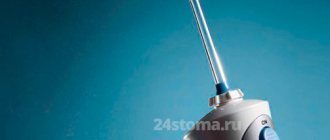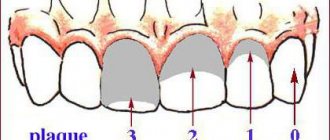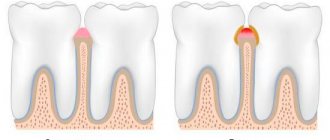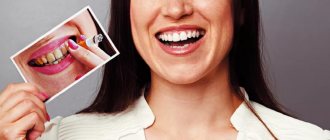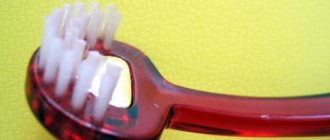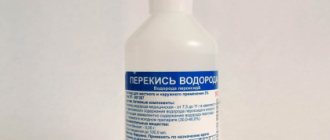The importance of oral hygiene
The health of our teeth and gums directly depends on proper oral hygiene. The importance of daily hygiene procedures is difficult to overestimate, but it is often easy to underestimate and pay with the loss of teeth even at a young age. So the statement of dentists that one of the most effective and at the same time simple ways to prevent dental diseases is proper and regular dental and oral hygiene in children and adults is more relevant than ever. We should not forget that hygiene procedures should not be limited to just brushing your teeth at home.
Preventive oral hygiene is a comprehensive measure that includes daily brushing of teeth and visiting a hygienist at least once a year. The fact is that in order to maintain teeth and gums in a healthy condition, it is necessary to promptly and efficiently remove dental plaque, as well as thick plaque on the tongue. Food debris and soft plaque can be removed with a toothbrush and toothpaste. But the removal of tartar (mineralized dental deposits) is carried out by a dentist using special means and instruments, for example, Air Flow. In this regard, comprehensive oral care implies individual and professional hygiene.
Types of toothbrushes:
Manual brush
When carrying out orthodontic treatment, special orthodontic toothbrushes are used.
A special feature of these brushes is the special arrangement of the bristles and the presence of a V-shaped cutout. Thanks to it, shorter bristles clean the surface of the bracket, and longer ones clean the surface of the tooth. In addition, an orthodontic brush should have softer bristles than a regular one so as not to cause damage to the gums during brushing.
This type of brush is preferable when carrying out
orthodontic treatment.
Electric toothbrushes:
Mechanical:
When treating with braces, it is necessary to use special attachments for electric mechanical toothbrushes: they should be narrower and softer. And I would like to note that during the treatment process, the brushes wear out quite quickly and the attachments will have to be changed about once a month.
Sonic and ultrasonic
The difference between these two types of brushes is the frequency of vibration.
The sonic brush operates at an oscillation frequency of 16 - 20 thousand. GC.
A real ultrasonic toothbrush should have a piezoelectric element in close proximity to the bristles. Using such a brush, you don’t even need to make the usual cleaning movements - you just need to wet the brush head and apply it to your teeth for 5-10 seconds. An ultrasonic brush has an antibacterial effect (kills germs), cleans teeth from soft plaque and tartar, and acts not only at the point of direct contact, but also within a radius of 4-5 mm.
The impact of ultrasonic vibrations can be quite aggressive in the presence of fillings, veneers, braces and areas of softened enamel. Therefore, you can only use brushes whose manufacturers recommend their use in orthodontic treatment.
Keep in mind that it is not so much important which toothbrush you choose, but the care with which you brush your teeth.
A toothbrush is the main, but not the only tool. To reduce the risk of tooth decay or white chalky spots, ADDITIONAL HYGIENE PRODUCTS are a must!
These include:
- irrigators
- interdental brushes
- interdental floss
- monotuft brushes
Let's talk in more detail about each of them:
1) Irrigators
Why is just a toothbrush not enough? After eating, a favorable nutrient environment for billions of bacteria is created in the human mouth. Some of these microorganisms, when constantly exposed, cause bad breath and subsequently lead to tooth decay. This is why it is necessary to clean your mouth as thoroughly as possible. Many dentists recommend using irrigators, regardless of whether you wear braces or not. But, unfortunately, most people still use only a brush and toothpaste.
So what is an irrigator?
An irrigator (from the Latin irrigo - to irrigate, to water) is a device for carrying out hygienic procedures, the principle of which is to supply a jet of liquid under high pressure. This jet can easily penetrate those hard-to-reach areas where neither a toothbrush nor a toothpick can reach. As a result, food debris and soft plaque are removed (washed out) from the interdental spaces, periodontal pockets, and the area of orthopedic and orthodontic structures and implants.
A jet of water supplied under pressure also gently massages the gums, leading to improved microcirculation, reducing bleeding and strengthening them.
The irrigator consists of a mechanical part, a water tank, and a handle with a nozzle.
Depending on the company and model of the irrigator, the attachments can be very diverse:
- standard nozzle (used for daily care)
- with a thin spout (for rinsing periodontal pockets)
- orthodontic (with additional soft bristles)
- attachments for implants, crowns, bridges (attachments with three tufts of bristles)
- for cleaning the tongue (in the form of a spatula)
Irrigators can be stationary or road-mounted (with a battery).
There are special liquids for irrigators on sale that create an additional feeling of freshness, strengthen the gums and have an antiseptic effect. (liquids containing chlorhexidine are not suitable for everyday use)
Please note that using an irrigator does not exclude the use of a toothbrush, it only helps make your teeth even cleaner.
Compliance with all hygiene rules during orthodontic treatment is necessary. And the more carefully you take care of your oral cavity at home, the fewer problems with your teeth and gums you will have in the future.
2) Interdental brushes
Interdental brushes are designed to clean interdental spaces, the cervical area and the area around braces.
Cleaners vary depending on:
- handles (can be of different lengths, most often patients like a short handle - it is easier to manipulate in the oral cavity, but the choice is very individual);
- working part shapes. The working part can be of various shapes: cylindrical, conical or curved (conical brushes are traditionally considered orthodontic);
- size of the working part. Dimensions usually vary from 0.4 to 1.1 mm.
If the patient has sufficiently large gaps between the teeth, then it is more convenient to use thick brushes, but if, on the contrary, there is severe crowding, it is more convenient to use thin ones. A brush of the correct size completely fills the space between the teeth and braces and easily penetrates into all the recesses;
- manufacturing material. Nylon is most often used for the pile, and for the metal rod - a medical alloy that is not susceptible to oxidative processes in the oral cavity. There are also silicone brushes.
They are made without the use of metal, have elastic and atraumatic bristles and resemble a toothpick in shape.
The orthodontist can give recommendations on the selection of brushes, but most often the patient understands through experience what is more convenient for brushing teeth and which brush to choose.
For ease of selection, there are sets of brushes of different sizes (assorted).
In our clinic, we give a trial set of hygiene products when fixing the braces system, which can determine what is right for you.
We also have a large selection of interdental brushes of various types and sizes for sale.
It is recommended to change the brush once every 2 weeks.
It is necessary to use brushes after 3 minutes of brushing with a special toothbrush. During the process, it is necessary to clean all interdental spaces and areas under the arch and around the bracket. It is advisable to do this cleaning after every meal (at least 3 times a day). No paste is needed to use brushes.
3) Interdental threads (floss)
When treating with a brace system, it is impossible to use regular dental floss - since all the braces are connected to each other by an arch, which prevents the thread from penetrating into the interdental space.
Therefore, for those who are accustomed to using dental floss and suffer without using it during treatment with braces, they can use brushes or special Superflosses.
SuperFloss is a dental floss consisting of one (or two) hard ends and an unwaxed wide fiber in the middle. Using the hard tip, you can thread the floss into the interdental space and then use the middle part to clean the interdental space.
It is believed that unwaxed dental floss, when it becomes fiber-free, has better contact with the approximal (lateral) surfaces of the teeth and, accordingly, cleans them better.
4) Mono-tuft brushes
A mono-tuft toothbrush consists of a thin handle and one tuft of bristles (“mono” - hence the name) located perpendicular to the handle. A mono-beam brush allows for spot cleaning, which is very convenient if there is a brace system in the oral cavity, as well as orthopedic structures and implants. Among other things, the direct indication for using a monotuft brush is cleaning the distal (posterior) surfaces of molars.
The working part of a monotuft brush can be of different shapes (conical and rounded) and of different hardness (from hard to ultra-soft).
For example, the TePe Compact Tuft mono-tuft brush has a short, rounded tuft consisting of 700 ultra-soft bristles.
With such a brush you can thoroughly clean the cervical area and the area around the bracket without injuring the gums.
Due to the size of the brush and the softness of the bristles, TePe Compact Tuft has no restrictions on use, with the exception of babies under one year of age.
The Interspace TePe mono-beam brush is an angled brush with a pointed beam.
This brush is also very convenient for people with braces, since with a thin tuft of bristles you can clean the areas under the arch, as well as around the braces themselves.
For this brush there are attachments of different hardness. Each hardness has a specific color. Replaceable nozzles with a blue base have medium hardness (medium), with yellow ones - soft hardness (soft), and with red ones - extra soft hardness (extra soft).
Individual oral hygiene
Individual oral hygiene is most effective if you follow certain rules on how to brush your teeth. As you know, there are many ways - each of them is correct and complete, it all depends only on our personal preferences. But it is still advisable to listen to the following recommendations from dentists:
- Always start brushing your teeth with the same row of teeth;
- adhere to a certain sequence of teeth cleaning so as not to miss any area;
- Carry out cleaning at the same pace in order to maintain the required duration of cleansing.
Of course, you need to pay attention to your teeth brushing technique. If, for example, you brush your teeth across the dentition, the enamel will wear off over time. Therefore, individual oral hygiene must be carried out in compliance with the technique of brushing teeth (you cannot even make circular movements - they must be perfectly round). But in our version they are more oval. Therefore, due to non-compliance with this important rule, the enamel by about 35 years of age is severely damaged, if not completely erased. However, if you use an ultrasonic brush, all of the above is not relevant for you. In addition, do not forget that cleaning the tongue with special scrapers is a necessary component of oral hygiene.
Basic personal oral hygiene products:
- toothpastes, gels, tooth powders;
- toothbrushes;
- chewing gum (therapeutic and prophylactic).
It is recommended to choose toothpastes depending on the presence of certain problems or specific tasks. If you have had dental implants, your best choice would be toothpaste for implants. To lighten the enamel surface, you should pay attention to whitening pastes. But to strengthen teeth, restorative products are suitable, for example, Theodent or Swiss Smile Crystal toothpaste with theobromine.
There are also additional oral hygiene products. These include:
- floss (dental floss), toothpicks;
- oral irrigators (before choosing the best irrigator, be sure to study the main characteristics of the models);
- means for cleaning the tongue: scrapers, scraper brushes;
- Mouth rinses, oral deodorants, teeth whiteners;
- denture treatment powders/denture treatment tablets;
- foam for oral hygiene (foam dissolves plaque well and is indispensable where it is not possible to use standard oral hygiene products; just hold the foam in your mouth for 20–30 seconds and spit).
The unique, multifunctional device JETPIK JP200-Elite combines an electric sonic toothbrush, irrigator and dental floss. The components and the device itself are stored in a convenient plastic container, which is ideal for traveling or storing in a small bathroom.
Oral hygiene is important not only for the prevention of caries, but also for free, comfortable communication with others. Stained yellow teeth and bad breath will not make anyone attractive. Aesthetic dentistry procedures such as veneers and expensive laser teeth whitening will not make sense without basic hygiene procedures.
Publisher: Expert magazine about dentistry Startsmile.ru
Results and discussion
The initial value of the Silness-Loe index in the group was 1.2±0.27, the average value of the Navy-Rustogi index was 0.7±0.11. At the beginning of the study, the differences in the average index values between the quadrants were not statistically significant: the ANOVA criterion value was 0.151 for the Silness-Loe index and 0.162 for the Navi-Rustogi index.
Within 4 weeks, a statistically significant decrease in the average values of the studied indices was noted in all quadrants (Tables 1, 2). The average value of the Silness-Loe index was 0.7±0.28, the average value of the Navy-Rustogi index was 0.5±0.16. At the same time, using the ANOVA test, differences in the average index values between the quadrants were determined, which indicates the unequal effectiveness of the hygiene products under study.
The T-test was used to compare mean index values between quadrants and identify the most effective hygiene products. A statistically significant difference in mean values was found between quadrants 1 and 2 (interdental brushes and floss), 1 and 3 (interdental brushes and a monotuft brush), 1 and 4 (interdental brushes and control), 2 and 4 (floss and control), 3 and 4 (mono-tuft brush and control). However, there was no statistically significant difference between quadrants 2 and 3, indicating the same effectiveness of floss and mono-tuft brush.
The results of the study suggest that training in the correct technique for brushing teeth and the use of additional hygiene products can increase the effectiveness of individual oral hygiene, as evidenced by a decrease in the values of hygiene indices. Note that the average values of the studied indices decreased even in the control quadrant, which we associate with increased motivation and improved manual skills. However, by comparing the average index values in different quadrants, it can be concluded that interdental brushes provide maximum effectiveness of oral hygiene. There was no significant difference in the effectiveness of floss and a single-tuft toothbrush in this study.
The data obtained generally coincide with the results of previous studies. According to the results of a meta-analysis of 22 studies conducted by G. Kotsakis et al. (2018), irrigators and interdental brushes are recognized as the most effective means of interdental hygiene [9]. According to D. Bourgeois et al. (2016), interdental brushes in combination with a manual toothbrush can significantly reduce bleeding of the interdental papilla when brushing teeth [10]. At the same time, researchers note that brushes are more effective than floss both in terms of plaque and bleeding [11, 12]. However, to ensure high-quality removal of biofilm in the interdental space, it is necessary to first determine the individual size of the brush [13].

